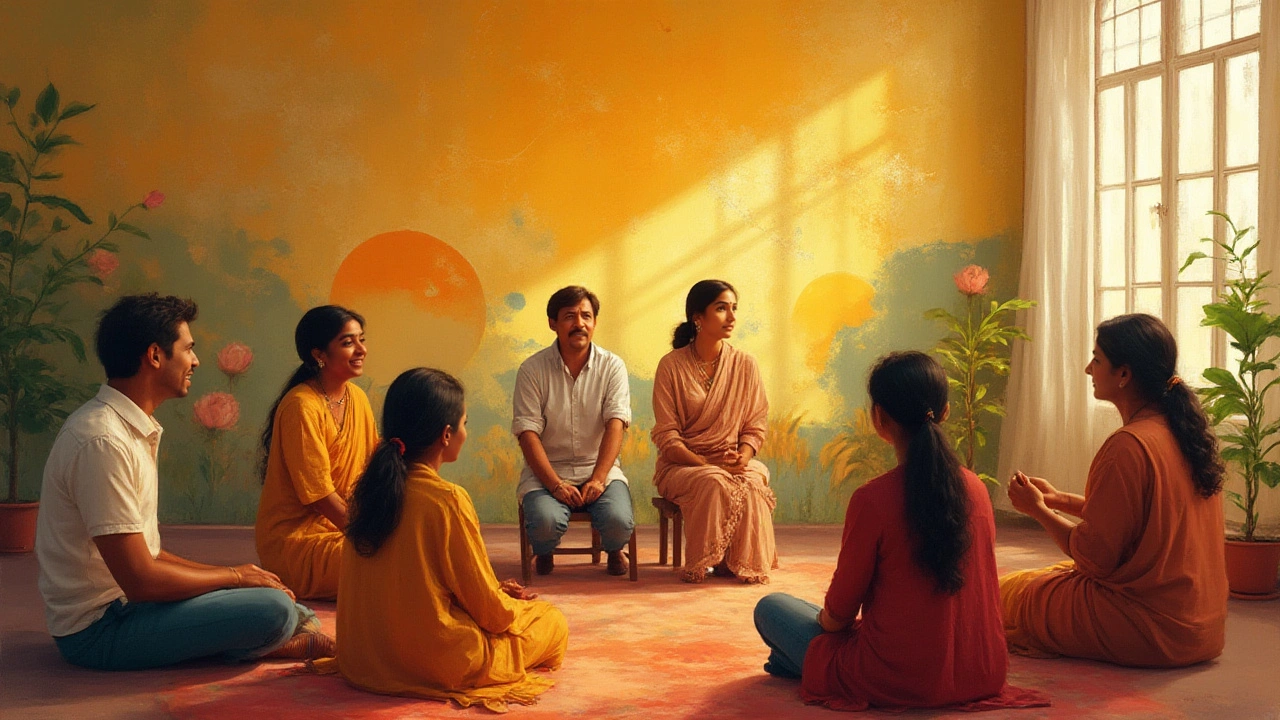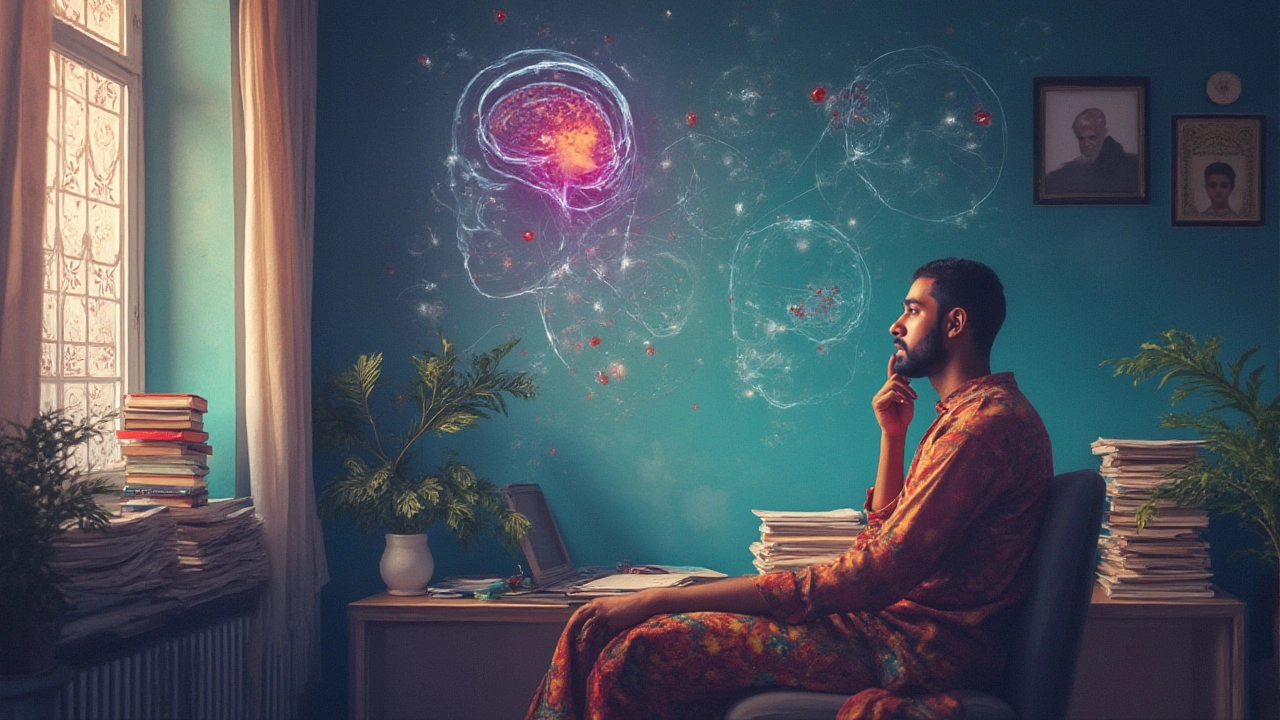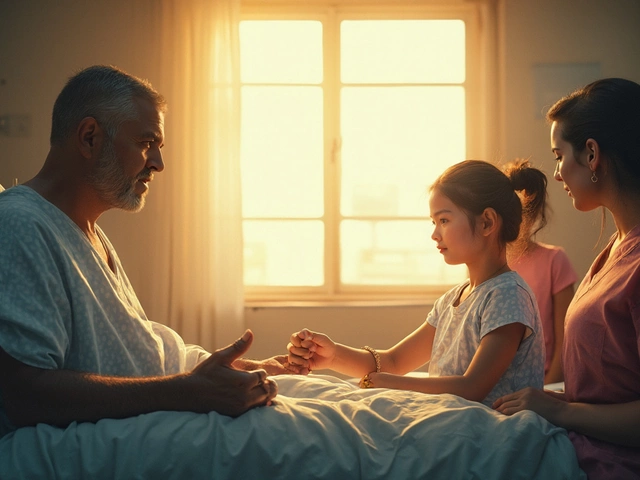Imagine fighting a battle every day not just with others, but within your own mind — with no set cure, and no quick fix on the horizon. Now, stretch this fight over weeks, years, decades. This is daily life for some people with the toughest mental illnesses out there. Not all mental disorders are created equal: some respond to therapy or meds after a few sessions or months of consistency. But then there are conditions that push even the most skilled psychiatrists to their limits—where progress is slow, setbacks are constant, and the road to recovery is littered with frustration. Ask any mental health professional which disorder drains their energy most, and “Borderline Personality Disorder” (BPD) almost always lands at the top, neck and neck with severe Treatment-Resistant Depression and some forms of schizophrenia. Let’s tackle head-on what makes some mental illnesses nearly impossible to treat, and why BPD usually wears the crown.
Defining "Hardest to Treat"—What Makes an Illness Stubborn?
First, let's clear up what “hardest to treat” really means. It isn’t just about a bad mood or worrying too much. It’s about disorders that refuse to budge, dig in their heels, and outsmart even the best mental health strategies. Some illnesses have a chemical vibe, meaning medication makes a huge difference. Others just need a proper therapist—get the right person, and you see changes in weeks. But a select group resists easy answers. Their symptoms are slippery. The diagnosis keeps shifting—one day depression, the next day something else. Maybe the person doesn’t stick with therapy, or maybe no medicine seems to work at all. Or the very symptoms of the illness—like deep mistrust or wild self-sabotage—make sticking to a treatment plan basically impossible. In India, hospital stats show that only about 1 in 3 patients with BPD even finish a year of regular therapy after diagnosis. That’s a dropout rate nobody would tolerate with diabetes or asthma. When people relapse, specialists blame not just the illness but the system: gaps in care, stigma, and families who bail out.
Then there’s the sheer complexity. Take schizophrenia—usually seen as the gold-standard for "hard-to-treat". But when you include things like hallucinations, social withdrawal, and odd beliefs, the recovery path can be foggy and winding. Yet, medications can still do wonders for many with schizophrenia. Not so with BPD. Meds might help a bit, but the core issues lurk deep in how someone relates to others, and more crucially, how they see themselves.
| Condition | Typical First-line Treatment | Treatment Response Rate | Dropout Rate |
|---|---|---|---|
| Depression | SSRIs + Psychotherapy | 60-70% | 15% |
| Schizophrenia | Antipsychotics | 70-80% | 20% |
| Borderline Personality Disorder (BPD) | Dialectical Behavior Therapy | 40-50% | 65% |
Notice that drop-out number for BPD? That’s not a typo. Consistency is rare, and that’s part of what makes this illness so draining to tackle.
Why Borderline Personality Disorder Tops the List
Borderline Personality Disorder packs a tornado of emotional pain, self-doubt, and relationship drama. One minute, someone feels on top of the world, the next minute they’re convinced everyone hates them. “Walking on eggshells” is the phrase loved ones use. The real trouble is, BPD rewires how someone sees every interaction—it turns daily life into a never-ending survival crisis. Trauma, especially childhood trauma, plays a part. So does sensitivity to rejection.
The standard bouncer at the door here is talk therapy. But with BPD, the same behaviors that make therapy essential—like fear of abandonment, anger outbursts, or impulsiveness—also get in the way of actually showing up. Imagine knowing you need help, and still being too raw or anxious to step into the therapist’s room week after week. That’s the everyday paradox.
Here’s something wild: studies from the UK, US, and India all found similar patterns—only about half of those diagnosed with BPD stick long enough with treatment to see meaningful gains. Medications? Not much help, except to smooth over some symptoms like depression or anxiety. Unlike depression or bipolar, there’s no magic pill. The key tool—Dialectical Behavior Therapy (DBT)—works for some, but it’s long, requires consistent attendance, and few therapists are trained in it (especially in cities like Delhi or even Mumbai).
Add a side of stigma: in Indian families, the BPD label often gets hushed up or missed altogether. “Character flaw” is the favorite insult. But there’s nothing ‘flawed’ about someone wrestling with a disorder their brain hands them.
If there’s a bright spot, it’s this: with enough time, many people with BPD do get better. Recent 2023 research from NIMHANS in Bangalore shows that about 80% report less intense symptoms a decade after diagnosis—even without perfect treatment. The real catch is those first 5 years, when relapse is constant and the risk of self-harm or suicide is high (up to 10 times the average for the general public).

Treatment-Resistant Depression & Friends—Why Some Illnesses Won't Budge
If you thought BPD was the only one playing hard to get with therapy, think again. Depression that laughs in the face of antidepressants is a daily headache for psychiatrists worldwide. The technical name is Treatment-Resistant Depression (TRD). We're not talking "blue mood"—this is the kind that shrugs off two, three, sometimes five different medicines and just sits there. Even neat things like Transcranial Magnetic Stimulation or ECT help only some people. In India, at least 20% of people with major depression don’t get full relief, even after years of consistent meds and therapy. The causes aren’t always known: sometimes genes, sometimes chronic stress, often a mysterious cocktail of many things.
TRD saps energy, hope, and confidence. It fools you—one good week, then collapse for three months. Families get burnt out, and the patient starts doubting every positive day is just a fluke. For these folks, it’s not just about getting the right antidepressant; it’s about creative game plans: add-ons like ketamine infusions, deep brain stimulation devices, and—when available—intense exercise and even nutritional changes. These options sound high-tech, but access is expensive and limited in resources like Delhi’s public hospitals. The one thing that seems to help everyone: a therapy team that refuses to give up, even when the patient does.
Another honorable mention goes to severe Obsessive Compulsive Disorder (OCD). The kind that keeps people locked in their rooms for hours, washing till hands crack, or checking locks until sunrise. Even the best behavioral plans sometimes get shunted by brain circuitry that just won’t settle down. Surprisingly, in the last five years, some Indian clinics have started offering Deep Brain Stimulation surgery for ultra-severe, untreatable cases, and it’s had some promising results for selected patients.
No discussion here is complete without a nod to severe eating disorders. They might seem like a Western problem, but recent reports show rates climbing in urban Indian teens. The “stubbornness” here isn’t just in the mind; it digs into biology, brain circuits, hormones, even the family dinner table. Recovery can require months of both therapy and medically supervised nutritional boosts. In rare cases, the mortality rate is among the highest of any psychiatric illness worldwide.
Stigma, Family, and Society: Why Treatment Gets Even Harder in India
Picture this: you finally gather the courage to admit there’s a problem. Maybe you even find the right clinic or counselor. But when you try to explain BPD or “treatment-resistant depression” at home, instead of support you get blank stares or old-school myths. Even in 2025, families in India are often less forgiving of mental illness. Talking about depression isn’t too taboo anymore, but the more complex stuff—like BPD—finds little empathy. Sometimes family members sabotage treatment without even meaning to, blaming the patient’s “willpower” or calling the behavior an “excuse.” There’s still a deep-seated fear of labeling, and that often means the illness festers far longer than it would in open-conversation cultures.
Cultural values matter, too. For women, especially, BPD or EDs are often masked by social norms and pressure to appear fine. And when mental health clinics are already overbooked, getting specialized care can mean delays of months. NIMHANS, AIIMS, and a few private setups in Delhi are exceptions, but for most people, the nearest expert might be two states away. And therapists with DBT training are rarer than honest MPs.
There are upsides. Peer-support groups have exploded in the past few years (thanks in part to social media and WhatsApp). These groups offer real hope, shared tips, and validation. Smart doctors have started welcoming family members into therapy sessions—so even if the disorder won’t vanish, at least the patient isn’t fighting alone or in shame.

Real-World Tips: Coping When the Illness Refuses to Budge
No two journeys look the same with stubborn mental illnesses, but certain tiny wins really do add up. Here’s the hard truth: there’s no secret hack—no YouTube video or motivational quote can end the struggle overnight. But daily, practical strategies can help make the mountain climb just a bit less steep.
- hardest mental illness to treat: Never miss your therapy sessions, even when you feel like nothing’s helping. Relapses get shorter and less intense through consistency alone.
- Log your symptoms in a simple journal or phone app. Sometimes patterns only show up after weeks of tracking.
- Educate your family—not just about what BPD or TRD is, but about what it’s not (not stubbornness, not moral failing).
- Reach out to support groups—even online. Sharing pain makes it lighter and reminds you you're not the only one fighting this.
- Ask your doctor about trying new strategies: for BPD, look into DBT if you can find it; for TRD, ask about options like ECT, TMS, or a change in meds.
- Don’t expect every day to feel better. Celebrate tiny improvements—a day with one less outburst, a week without skipping therapy.
- Protect your sleep and cut back on substance use. This sounds obvious, but even mild sleep loss can set recovery back by weeks.
- Help your therapist by being brutally honest in sessions, even if you feel it might offend or anger them. BPD especially thrives on pretending everything is ‘fine’ when it's not.
- If you’re supporting someone with a tough mental illness, don’t play therapist—but don’t walk on eggshells either. Hold space, listen, and avoid piling on guilt.
- Push back against stigma wherever you see it—at home, at work, on Instagram. Every time you educate one person, you help more people than you know.
One final dose of hope: People do recover. Maybe not tomorrow, maybe not this year—but data consistently proves that the most “untreatable” mental illnesses can loosen their grip with sheer persistence, a bit of science, and lots of support. There’s no shame in admitting something is hard to treat. The only real loss is giving up on the story halfway.



